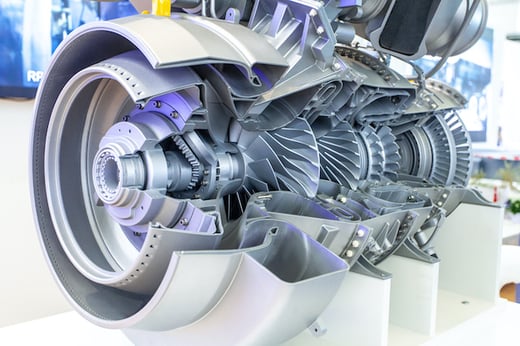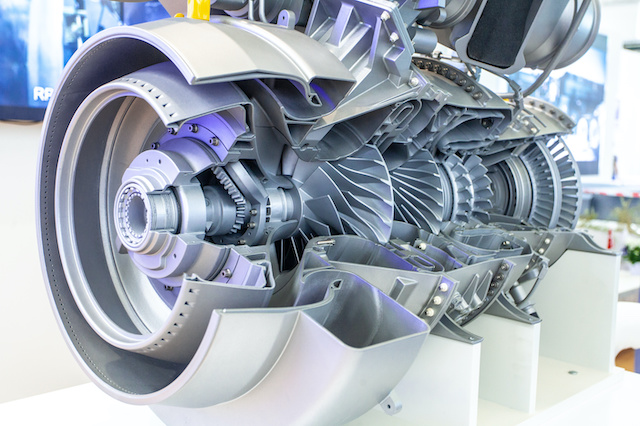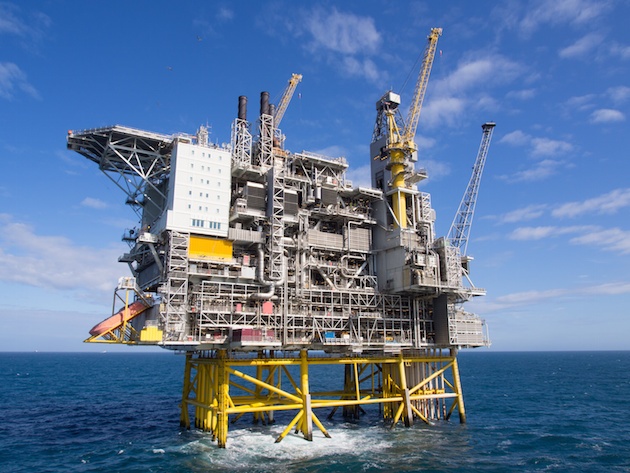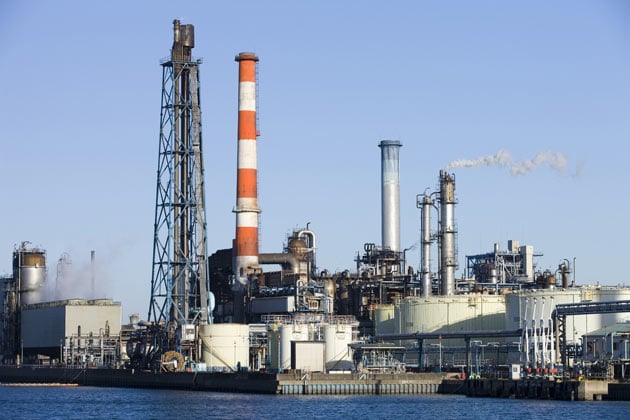
Of all the different alloys, we carry here at Corrotherm, one of the most widely used and versatile products is INCONEL alloy 600. And for good reason too. The combination of a high nickel content, chromium and iron means that it exhibits excellent corrosion resistance in a range of environments, has good impact strength, and can be machined and welded through standard methods.
“INCONEL alloy 600 is a very versatile material. Since it was introduced in the 1930s, it has proven to be a popular choice for a range of industries, including chemical processing, aerospace and nuclear. This is due to its high-temperature strength, and resistance to all manner of corrosive environments,” says Shan Sadanandan, sales manager at Corrotherm.
Corrosion resistance
One of the reasons that INCONEL alloy 600 is a standard material in a number of different industries is thanks to its superior corrosion resistance. The inclusion of chromium (approximately 14-17%) in the alloy’s composition gives it fantastic resistance to oxidising conditions at both high temperatures and in corrosive solutions. The chromium also gives the material resistance to sulphuric compounds. The material has a very high nickel content, which contributes to its resistance in reducing environments, as well as alkaline solutions.
The high nickel content has another very notable benefit for this particular alloy. A common problem with austenitic chromium-nickel stainless steels is that they fail due to stress-corrosion cracking when in an environment containing chlorides, among other conditions. These factors can include stress, water and dissolved oxygen.
When the nickel content of austenitic alloys is increased, this tendency decreases. As INCONEL Alloy 600 has a minimum of 72% nickel content, it is almost completely immune to this chloride-ion stress-corrosion cracking. There are still some conditions that may cause stress-corrosion cracking, such as in the presence of high temperature, high-strength caustic alkalies, but proper stress-relief treatment prior to use can help to combat this.
Stress-corrosion cracking could still occur in situations when mercury is present at higher temperatures, but again there are solutions to this problem that involve correct stress-relief procedures. This is why it’s so important for design engineers who are selecting a material for an industrial project know what external elements and what temperatures the alloy will be exposed to, to ensure it’s properly treated for its intended end application.
Mechanical characteristics
As well as its corrosion resistance and other chemical properties, INCONEL alloy 600 has a good range of mechanical characteristics. It’s possible to get a broad range of strength, hardness and toughness, depending on how the material is treated.
For example, in its annealed condition, INCONEL alloy 600 has moderate yield strength of 25-50 ksi (172-345 MPa) and elongation of 55 to 35%. Knowing the exact yield specification is an important consideration in the selection of a material for industrial use. The actual yield strength property depends on the alloy’s treatment, form and condition, so these values are only a guide to the typical specifications available. However, if the alloy is heavily coldworked, its property values can be significantly higher. The yield strength of INCONEL alloy 600 in wire form (1.6-6.4mm diameter) that has undergone cold-drawing and spring tempering can exhibit a yield strength of 150-210 ksi (1035-1450 MPa).
Another key mechanical characteristic is the material’s tensile strength, the maximum stress a material can withstand while being stretched before breaking. Nominal room-temperature tensile strength ranges from 75-170 ksi (520-1170 MPa), but again this is dependent on the form and condition of the material being used. Under the same coldworked conditions and in wire form as mentioned above, the tensile strength can reach 170-220 ksi (1170-1520 MPa). For the highest strength values possible, coldworking is required. This is usually combined with a heat treatment too – which we look at in more detail further on.
While INCONEL alloy 600 is known for its high-temperature applications and end uses, it’s important to know the effect of colder conditions too. For example, the tensile properties of cold-drawn rod at cryogenic temperatures show a 20% reduction. Not all mechanical properties are affected by colder environments though. INCONEL alloy 600 has good impact strength at room temperature, but it retains virtually all of that strength at lower temperatures too. There is no tough-to-brittle transition with decreasing temperature in tests.
Fatigue strength is another key mechanical property to consider. This is the maximum stress a materiel can withstand under repeated load. Advanced testing (which can be viewed in the full data sheet) highlights which variables have the biggest impact on the fatigue strength of INCONEL alloy 600. Differing carbon content values and varying amounts of hot/cold work have no apparent effect on the cyclic-strain behaviour, for example. Grain size and mechanical properties impact on high-speed rotating beam fatigue strength, but have little effect on low-cycle fatigue strength.
Given the high-temperature, critical functions that INCONEL alloy 600 is used for, its creep value is another key mechanical factor. Creep is the slow and gradual deformation of an object over time. Thorough mechanical tests show that the material doesn’t embrittle after long exposure to high temperatures. This helps its suitability for a wide range of industrial uses and applications.
Industrial applications
Given how versatile this alloy is, INCONEL alloy 600 lends itself a wide range of different applications, particularly those where temperatures are significantly elevated. This includes, for example, in the furnace and heat-treating fields for retorts, boxes, muffles, wire belts, roller hearths. The alloy performs well in these situations thanks to its aforementioned resistance to oxidation and to the elements present in the furnace atmosphere.
The alloy is commonly used in nitriding containers. Nitriding is a surface-hardening heat treatment applied to steel that works by dissolving nitrogen onto the surface of the metal without risking distortion. It has been used since the early 20th century, when metallurgist Adolph Machlet discovered the process by accident in 1906. INCONEL alloy 600 is useful as part of the containment system, as it is resistant to nitrogen at high temperatures.
Another industry where integrity and performance is paramount, is the nuclear field, where materials used are put into extreme conditions involving heat, corrosive chemicals and high pressure. This technically advanced alloy has become a standard material of construction, particularly in the water systems of reactors. This is thanks to its resistance to corrosion by high-purity water, and no evidence of chloride-ion stress-corrosion cracking in use. When INCONEL alloy 600 is manufactured for use within the nuclear sector, it needs to be produced to incredibly exacting specifications and is given its own designation, INCONEL alloy 600T.
It is also well used in the chemical industry, for things like bubble towers, evaporator tubes, heaters, tube sheets, stills, cathode-ray tube spiders and more. Due to its good corrosion resistance, it is useful for flaking trays for the manufacture of sodium sulphide, as well as equipment for handling abietic acid in the manufacture of paper pulp.
Finally, it can be employed within the electronics industry, for components like cathode-ray tube spiders, thyratron grids, tube support members and springs.
Heat-treating the alloy
INCONEL alloy 600 can be fabricated by both hot and cold working. While cold working hardens and strengthens the material, by combining cold work with hot work, it’s possible to produce various mechanical properties.
The type of heat treatment employed depends on what end result is needed. For example, an annealing treatment of about 1010°C for 15 minutes will give a soft material with a fine-grain structure, which is often preferred as it gives better corrosion resistance and higher tensile, fatigue and impact strength. However, for maximum creep and rupture strength, it’s best treated at 1090°C-1150°C for one to two hours, which dissolves the carbides and gives an increased grain size.
This is just more proof of this alloy’s versatility, showing that it can be adapted, through expert workmanship, to meet the needs of such a wide range of industrial applications.
For detailed technical specifications of this alloy or other INCONEL alloys, see the website. To discuss your requirements, please contact a member of our sales team.
 The characteristics of INCONEL Alloy 600
The characteristics of INCONEL Alloy 600

